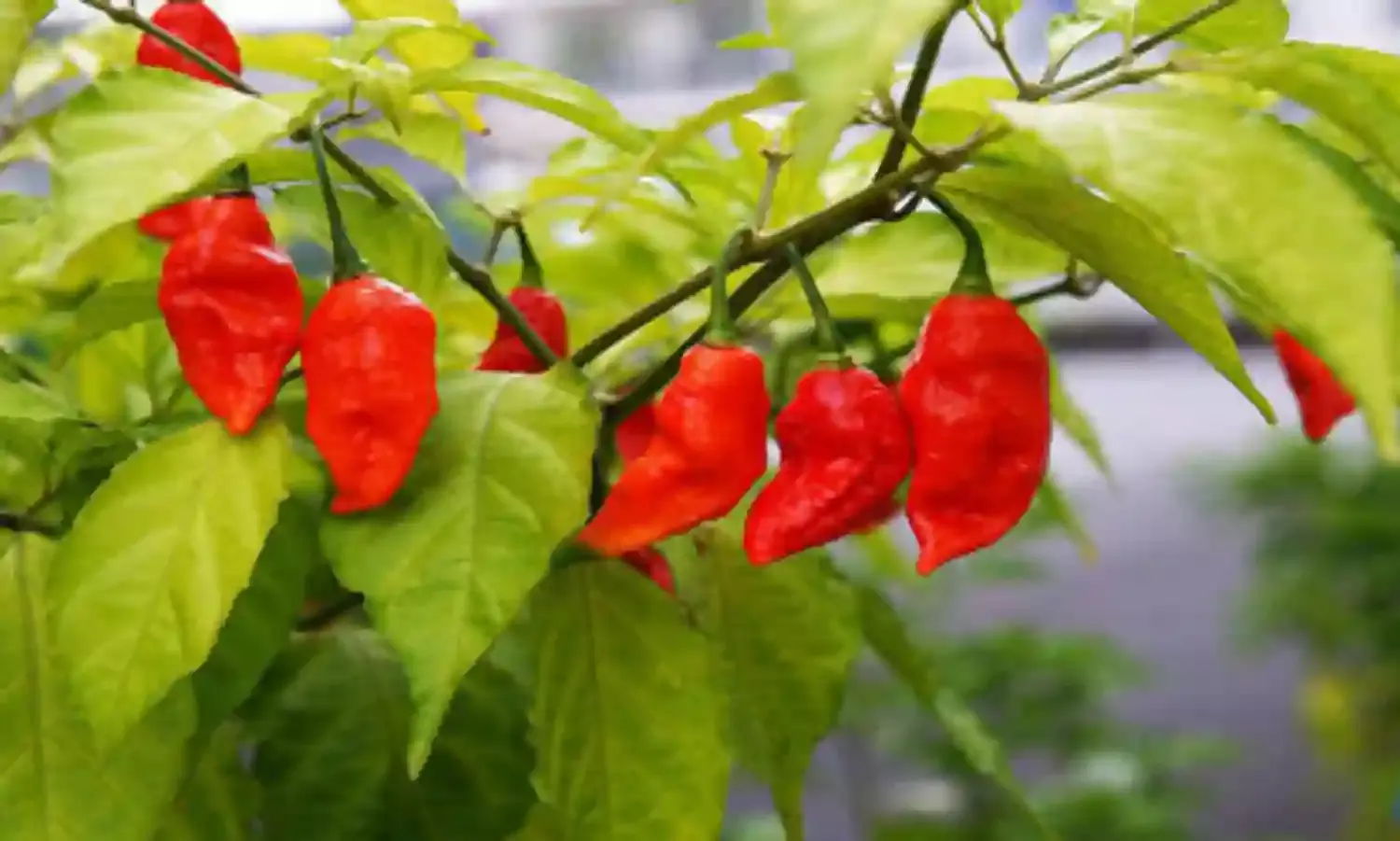Now That’s “Hot, Hot, Hot”!!
Now That’s “Hot, Hot, Hot”!!

The traditional Bhut Jolokia or ‘Naga King Chilli’ has several vernacular names like Naga Jolokia, Bih Jolokia, Dorset Naga, Raja Mirchi, Borbih Jolokia, Nagahari, Ghost Chilli, Naga Viper Chilli, Poison Chilli etc. If you love chillies like me and by chillies I mean – fiery hot and as spicy as can be… This is the chilli for you! Whatever the names by which it is called, it remains the same chilli.
Not surprising that the Bhut Jolokia has earned the Guinness World Records’ recognition as the World’s Hottest Chilli Pepper! Weighing in at 1,001,304 Scoville Heat Units (SHUs), the Bhut Jolokia chilli from India blasted the previous champion Red Savina which was at 577,000 SHUs) by almost double.
This beautiful ‘spice of life’ originates from the northeast of India, particularly Assam, Nagaland and Manipur. It belongs to the Capsicum Chinense family and is known by many names in the different Indian provinces. Ripe Bhuts measure 60 mm (2.4 in) to 85 mm (3.3 in) long and 25 mm (1.0 in) to 30 mm (1.2 in) wide with an orange or red colour.
For those who are not used to eating chillies: One seed from a Bhut Jolokia can sustain intense pain sensations in the mouth for up to 30 minutes before subsiding. The smallest amount of Bhut Jolokia can flavour a sauce so intensely it’s barely edible and taking a small bite of the Bhut Jolokia can cause the eyes to water and a runny nose as well as a burning sensation in the mouth that may even last for say… Ummmm up to 5 hours! Yes that’s all!!
The Nagaland Government has also finally won the patent rights for the ‘Naga King Chilli’. The state has been registered as the proprietor of the chilli with the government of India, according to the Geographical Indication Registry.
The various tribes of Nagaland are united and bound by their love for this chilli. For some, it’s an enigma but for me the goal is to make it to the home turf at the annual all-tribe get-together, the Hornbill Festival, which includes a Naga King Chilli-Eating Competition. That brings a smile on my face and no it’s not an evil grin but a scalding one!
The chilli is unforgiving – and is not everyone’s friend. Fortunately it is very kind to me and resides in many ‘a pickled’ form in my home…larger than life and staring at anyone who dares to mess with the sanctity of my refrigerator!
A Naga folk tale also talks about a bet between two friends on eating a certain amount of this chilli. One of them died after fulfilling the bet by consuming the agreed number of chillies. The chilli has a distinct taste and pungency although some may need to acquire the taste. While some cannot even touch it, some consume about 3-7 whole pods in one (meal) sitting, using it in both their curry and as a chutney. With some people – including me, it seems the chilli becomes addictive as they can no longer enjoy their food without the same heat! It is used in many kinds of food preparations - fresh, dried, powdered and in pickled forms.
The Naga King Chilli, despite its reputation, is actually a very sensitive and vulnerable item. Even after germination of the seeds, and planting/transplanting very good looking saplings, the trees may not fruit at all if for instance there were very heavy rains or no rains at all. After harvest, it has very little staying power and easily rots. And when it rots, it is like, or worse than, the proverbial rotten tomato, making all others rot!
Used as an everyday food item the product is highly prized and the cost, accordingly, is also the highest in Naga society. Some Nagas use crushed/powdered Naga King Chilli as a pesticide to protect crops from insects/harmful bacteria. In Assam, some environmental NGOs also use this chilli as protection against the depredations of wild elephants as it can apparently frighten off elephants. The ‘Assam Haathi Project’ has been experimenting with the construction of smoke bombs containing dry chilli and smearing fences with chilli oil in order to deter wild elephants from encroaching on farmland.
Apart from it being the major ingredient used in the manufacture of hot sauces by a wide variety of food manufacturers, both big and small, the chilli is also used as the basis for a tropical analgesic. The Naga King Chilli, possibly, the only chilli that contains genes of both Capsicum Frutescens and Capsicum Chinense, is said to be a circulatory stimulant and also used in treatment of atherosclerosis, shock, haemorrhage, heart attack etc. It is said to combine well with many herbal medicinal treatments.
According to medical research, chilies, in general, help in treatment of cancer by killing bad cells, obesity through weight loss, diabetes by reducing required insulin to lower blood sugar, heart diseases by preventing/delaying oxidation of bad cholesterol, rhinitis and bronchitis through thinning of mucus, and also reduces chronic pain. It is said to even assist in food preservation. In any case, the common properties of chilli are Vitamins C, A, B and B6. They contain high percentage of potassium, magnesium and iron as well as anti-ulcer properties.
The King Chilli therefore rules while the ‘subjects’ subjected to this legendary taste either relish it or run a mile!



